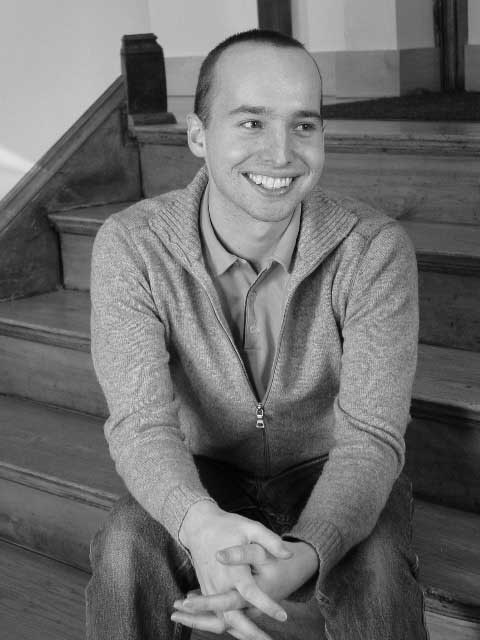Profile of a Playwright: Jordan Harrison
Jaime Kleiman interviews Jordan Harrison, Jerome Fellow and author of the interesting Museum Play at Red Eye.

Jordan Harrison is poised to become the next “it” playwright, following in the footsteps of other young, prolific scribes that first cut their teeth at the Playwrights’ Center. His claims he “snuck in” with an agent at William Morris, but his burgeoning success isn’t just dumb luck. The following interview provides a glimpse into the life of a writer you’ll be hearing a lot more from in the not-too-distant future.
Where are you from?
Originally, from Seattle…[but] I came here from Providence [directly after completing my MFA at Brown University]. That’s a city I love a lot too, but it’s harder to escape the solitude there. You would write and then you would want to go out and have some noise in your life and there wouldn’t be anyone around.
What was it like coming directly to Minneapolis on a Jerome Fellowship right after graduating?
It was a little dizzying. But it prevented me from having any sort of existential crisis. I knew where the next mission was. This is actually my second Jerome. I’ve been here about two years now.
Do you plan to stick around when the fellowship’s over?
You probably know about this-–there’s this hat trick with other fellowships you can get, the McKnight and the Bush. I’m applying for the Bush; it’s due in about a month. It’s a lot easier to make a living here than in other cities, and there’s a really good community of writers orbiting the Playwrights’ Center. We’ll see.
Let’s talk about your first play, Kid-Simple. It went to the Humana Festival, didn’t it?
Right. I was out of college by then. I’ve been here a year already. It was in the [2003] Humana Festival and then it was, bizarrely, in three productions after that. I spent this strange year following it from place to place…it’s a play that, I like to think, benefits from my presence in the room. It’s a little indeterminate on the page.
How so?
There aren’t any stage directions that describe what you’re actually seeing. The stage directions describe sound–my hope with that was that it could staged everywhere from a bunch of people with chairs and microphones and nothing else, or it could [be staged with] trap doors and hydraulic lifts. This was the first play that I let people read.
Where does The Museum Play fit into this?
The Museum Play came directly after Kid-Simple. It had a workshop production at Brown, and there’ll be readings at Signature Theatre Company and Playwrights Horizons, and a workshop at SoHo Rep [all in New York], which is very exciting. Everything I saw at SoHo Rep was audaciously designed…its world was very authoritative. It’s a good sign when a theatre tiptoes around a play, when they’re trying to get it right.
How did it end up in Minneapolis, at the Red Eye?
Steve Busa, the artistic director of the Red Eye, called up Polly Carl at the Playwrights’ Center and said–I don’t exactly how he described the kind of work he was looking to produce–but I assume he said “visually inventive” and “offbeat.” She gave him this new, weird play about museums. In about three weeks, he called and said he wanted to do it. I was drawn to the theatre because they’d done Lisa D’Amour’s work and Kira Obolensky’s–local writers that I like a lot. This is my first full production with a local company.
What other local companies have you worked with?
I just finished writing a commission for the Children’s Theatre Company, for their new theatre for teen audiences. I also just wrote a full-length play for Commonweal Theatre Company down in Lanesboro. I get a lot of writing done here.
What do you think characterizes your work?
Design usually plays a big role in my plays. The design carries emotional information. For example, in my play Fin In the Underworld, the set shrinks as the characters’ world’s becomes smaller. I use props, sound, and design to say what the characters can’t.
What’s it like seeing a theatre company produce your work?
The lack of control [over a play] is hard, [it’s hard] to surrender. There’s not one right way to execute a play. Plays are extremely vulnerable to interpretation.
What’s next?
I used to say, “Oh, somebody’s gotta do my play or I’ll die!” Now I’m a little bit more willing to wait for the right collaborative thing to come along. A little more. I’m pretty impatient.
Jordan Harrison’s The Museum Play is running at The Red Eye through October 10th. Call 612-870-0309 for tickets.